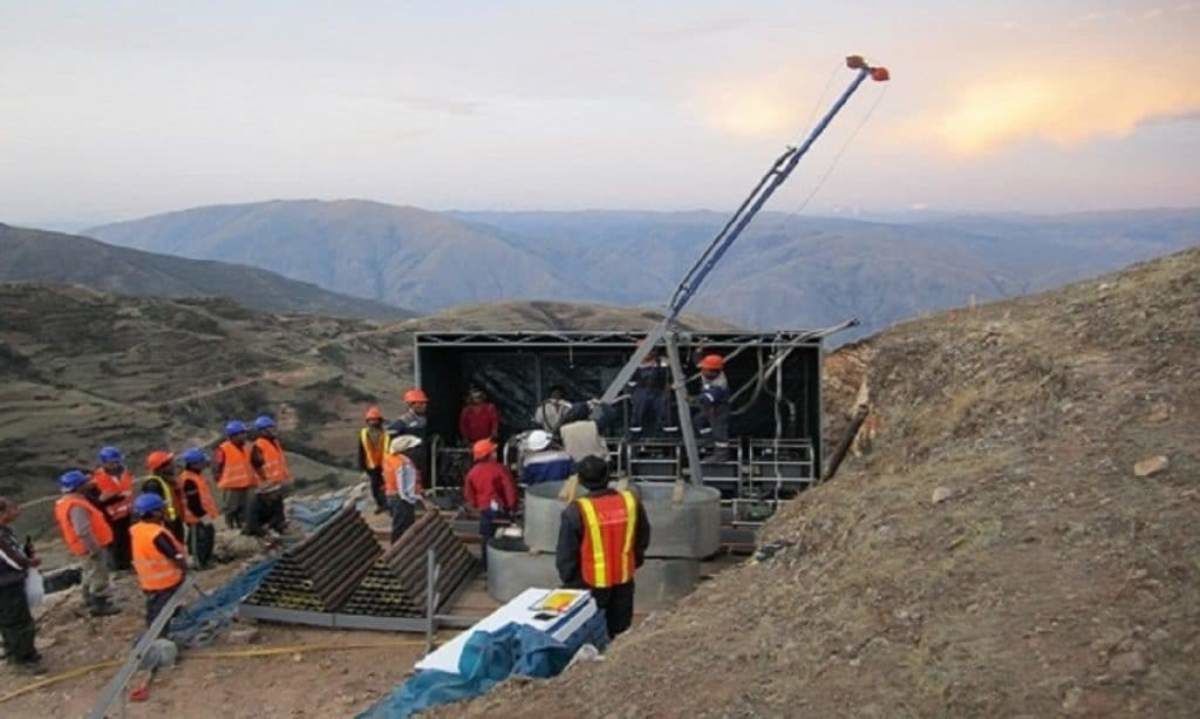
Hannan Metals Limited is a natural resources and exploration company developing sustainable resources of metal needed to meet the transition to a low carbon economy.
Hannan Metals Limited announced that it has received its environmental permit, the “Declaracion de Impacto Ambiental” (“DIA”), from the Ministry of Mines in Peru. The DIA is the primary environmental certification required to allow low impact mineral exploration programs, that includes drilling programs, to proceed at the San Martin copper-silver project in Peru.
Highlights:
- The area for the DIA allows for 40 drill platforms and covers an area approximately 9 km long and 3 km wide (2,700 hectares) at Tabalosos East (Figures 1 and 2);
- Drilling tenders are being sought now. Next steps are to apply for the Authorization to Initiate activities from the DGM (General Directorate of Mining from the Ministry of Mines), a process that takes 1 to 3 months, and then the Water Use Permit (1 month duration) from the Peru National Water Authority (“ANA”) which should see drill rigs on the ground in San Martin at the start of Q2 2024. As no indigenous population exists within the DIA area, Prior Consultation (“Consulta Previa”) does not apply;
- The copper-silver mineralized shale drill target at San Martin averages 0.9 m thickness at 1.9 % copper and 27 g/t silver from 105 surface channels and has been further defined by soil sampling and LiDAR over an area of 9-km-long by 1-km-wide area that is interpreted to extend with shallow dips to the west for between 2-4 km, with a target depth ranging from surface to 500 m.
Michael Hudson, CEO, states “The approval of our DIA is a watershed moment for Hannan and our Joint Venture Partners, JOGMEC (Japan Organization for Metals and Energy Security), for exploration in the foreland basins and back arc of the Andes in Peru.
“Our maiden low impact drill program will consist of up to 40 drill platforms to thoroughly test the extensive copper-shale horizon with holes up to 500 m depth. The DIA allows for hand-carried and helicopter-supported drill testing of its San Martin copper-silver project. We are thankful for all the detailed work of our employees and external experts and the amazingly strong support of the local communities during the public participation meetings, as well as the advice from various government agencies.
“We now can apply for the authorization to initiate activities, a process that typically takes one to three months followed by the water use permit, which should see us drilling early in Q2 2024.
“The drill program will provide the opportunity to outline the scale and grade of the extensive copper-silver-rich shale horizon into the third dimension after mapping continuity of the copper-silver mineralized shale over a 9 km x 1 km surface area at San Martin.”
San Martin Copper-Silver Project
Sediment-hosted stratiform copper-silver deposits are among the two most important copper sources in the world, the other being copper porphyries. They are also a major producer of silver. KGHM Polska Miedz’s (“KGHM”) three copper-silver sediment-hosted mines in Poland (the “Kupferschiefer”) were the leading silver producer in the world and seventh largest global copper miner in 2020. Quoted resources in 2019 for KGHM were 1,518 Mt @ 1.86% copper and 55 g/t silver from a mineralized zone that averages 0.4 m to 5.5 m thickness.
To provide context, Hannan’s widths and grade (0.9 m @ 1.9 % copper and 27 g/t silver) from 105 channel surface samples reported at San Martin (lower cut 0.5% copper), within an area about 9 km long and 1 km wide, compare with those found during the initial modern-day drill discovery of the Kupferschiefer copper-silver deposits.
- In 1957 the discovery drillhole (Sieroszowice IG 1) intersected 2.0 m @ 1.5% copper at the depth of 657 m.
- In 1959 the Lubin-Sieroszowice deposit, based on the results from 24 drillholes contained 1,365 Mt @ 1.4% copper and 26 g/t silver in indicated resources, with a thickness ranging between 0.2–13.1 m in an area about 28 km long and 6 km wide between 400 m and 1,000 m depth.
Hannan’s sampling, to date, has been confined to surface channel sampling, although mineralization at Tabalosos East is interpreted to extend with shallow dips to the west for between 2-4 km, with a target depth ranging from surface to 500 m.
Technical Background
All samples were collected by Hannan geologists. Samples were transported to ALS in Lima via third party services using traceable parcels. At the laboratory, rock samples were prepared and analyzed by standard methods. The sample preparation involved crushing 70% to less than 2 mm, riffle split off 250g, pulverize split to better than 85% passing 75 microns. Samples were analyzed by method ME-MS61, a four-acid digest preformed on 0.25g of the sample to quantitatively dissolve most geological materials. Analysis is via ICP-MS. Channel samples are considered representative of the in-situ mineralization samples and sample widths quoted approximate the true width of mineralization, while grab samples are selective by nature and are unlikely to represent average grades on the property. Gold was analyzed by ALS in Lima using a standard sample preparation and 25g fire assay sample charge.




